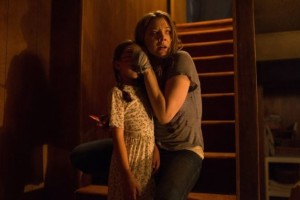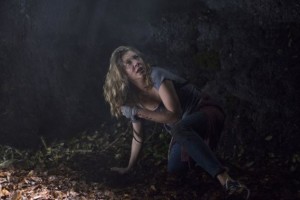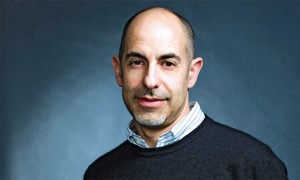David S. Goyer has been branching out from sitting at his computer penning scripts for years. The man who penned The Dark Knight Trilogy, Man of Steel and the upcoming Batman v Superman: Dawn of Justice has also been an in-demand producer on both TV and film and even video games. His latest film production, The Forest, is in theaters on January 8.
Meanwhile, the Geyer-produced (and also co-written by) Da Vinci’s Demons is a smash hit over on Starz. The man of all trades might just be the busiest man in showbiz.
Goyer called us to talk about The Forest, and our conversation also turned to the idea of expectations (in terms of Batman v Superman) and how one manages the public’s response to a simple trailer that only shows a minute amount of a larger story. He also dishes how he approaches a project and determines whether it is right for television or film.
In The Forest, the cinematic experience was clearly the one that the story called for. It follows Natalie Dormer, who plays twins Sara and Jess Price. When Jess disappears into The Forest, a Japanese wooded expanse – specifically called Aokigahara, which is also known as the Suicide Forest – Sara flies to the Land of the Rising Sun to find her. No one who enters The Forest is ever truly the same.
The Movie Mensch: You are not only quite the active writer, but also producer with work seen on both television and film. How do you look at a project like The Forest and determine which medium it is best suited for?
David S. Goyer: That requires a certain amount of examination. In fact, there were times that I started to develop an idea in one medium and then felt like maybe we should change course. Each one is decided on a case-by-case basis to decide if it’s something that has legs, that has a novelistic approach that you can explore over 10 to 20 to 30 episodes or if it’s something you can do in two hours. It’s about what is the best way to present it. What’s ironic about the Batman films is that you have an eye on there being a beginning, a middle and an end and you’re not thinking about sequels. But because of the success of The Dark Knight and those films, people are thinking about an expanded story universe. Suddenly, it’s like the individual films are these great TV episodes with a much broader story, which can be tricky. And also, in terms of The Forest, there was a sequel I was thinking about in my head when we were making it. But if we don’t get there, I feel the film is satisfying on its own. It’s not dependent on another film.
The Movie Mensch: In that realm, it’s such a fascinating time we live in because trailers and even teaser trailers are appearing so well in advance of a film’s release, and response is so immediate and widespread with the internet, your film has ups and downs with expectations before anyone has truthfully even seen no more than two minutes of it. With your upcoming Batman v Superman: Dawn of Justice, how do you personally handle positive reaction and negative reaction when it is based on the tip of the iceberg of what you will be giving a seated audience in a theater this coming March?
David S. Goyer: The more you get involved in the nuances of filmmaking, you start to get involved in marketing. That becomes an open debate in how much do you reveal versus not, how long a lead do you have. Some of it is dictated by when the film is completed. For The Forest, we literally finished the film two weeks ago and we usually do it within a calendar year of when it is released. We were shooting the film in March and April, so it was a quick turnaround. On one hand, we didn’t have a long lead and much to show in a trailer. But, it has become a strategy about how far out do you plant your flag. How much do you show? In the case of The Forest, we looked at a lot of different trailers. There was lots of debate about what to include and what not to include. We just felt our way through it. But with most films, you realize it’s not a race, it’s a marathon, and you have to be conscious of that and fully aware of that. It’s kind of like the political race that is going on right now. It’s a long, long race. There’s ups and downs for all the different candidates. You can’t be concerned with what people are talking about after that first debate. Often that first impression is just about letting people know that your project exists. You hope that they have a favorable response to it, but it’s more about letting them know that in a crowded landscape, you’re there. We’ve all seen examples of the public’s response wax and wane of movies that didn’t have a favorable first impression to a first trailer and then were blown away by the movie itself. As a filmmaker, you have to be cognizant of an audience’s responding to a minute of material, or two minutes of material. Someone cut together all the trailers for The Force Awakens and it was a total of four or five minutes. Meanwhile, the running time on that film was 140 minutes! That’s nothing. There is so much you don’t know about that film yet everybody’s saying, “Oh my God, we already know what the story is.”
The Movie Mensch: I remember when the trailer for Independence Day was released during the Super Bowl and people were like, wow, that movie doesn’t come out until the summer. We’ve come a long way.
David S. Goyer: I’ll say this, as a filmmaker I wish we weren’t releasing materials this far out. On the other hand, so much is about claiming a date. You have to release something that far out because you want to let everyone know that you’re coming on that date. You want to scare other people away from your date.




